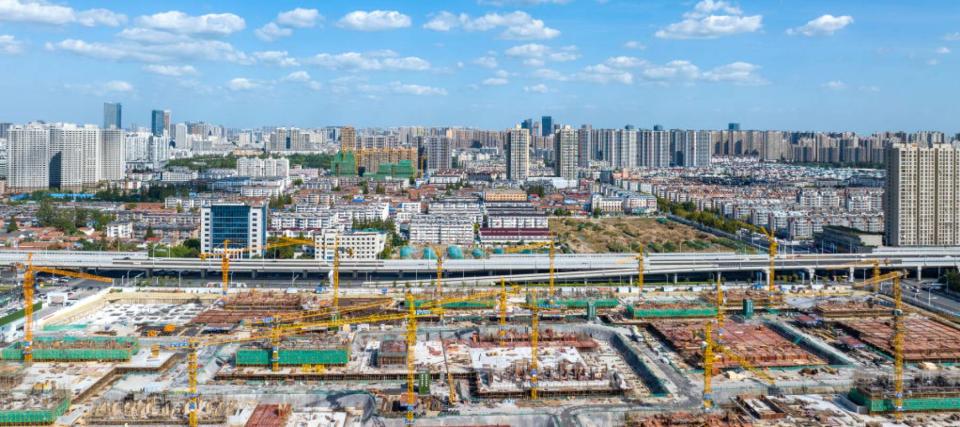Has China lost its golden opportunity to overtake the US? Here’s why one analyst is predicting it's the country's ‘last decade’ of prosperity and power

For decades, China has seen relentless growth in power and economic prosperity. But there are growing signs that the economic miracle has ended and that the path to further growth in the years ahead will be more difficult.
But does that mean China has lost its chance to ever overtake the United States? Here's a closer look.
Don't miss
Commercial real estate has outperformed the S&P 500 over 25 years. Here's how to diversify your portfolio without the headache of being a landlord
Rising prices are throwing off Americans' retirement plans — here's how to get your savings back on track
'A natural way to diversify': Janet Yellen now says Americans should expect a decline in the USD as the world's reserve currency — 3 ways you can prepare
China’s growth model
China’s gross domestic product (GDP) per capita, adjusted for inflation, surged from $293 in 1985 to more than $12,000 in 2021. Demographics, exports and capital investments made this economic miracle possible.
China’s enormous population — which was the largest in the world until India’s recently surpassed it — served as cheap labor for assembling goods that were exported aggressively. Meanwhile, the government invested heavily in infrastructure to support this export-led growth model and boost standards of living.
However, China’s economy has shifted from export-centric to a consumer-led, debt-fueled model in recent years. This model is now at risk. As of July, China's imports and exports had fallen quicker than expected as demand softened.
Uphill battle ahead
China’s recent trade tensions with the U.S., which kicked off under the previous administration and have continued under President Joe Biden’s, have disrupted a trading relationship that was integral to the economic “miracle” of the past four decades or so.
Meanwhile, wages have been rising rapidly, according to the country’s own National Bureau of Statistics, thus narrowing the gap between Chinese workers and rivals in other markets. Consequently, China reported that its exports were down 14.5% year-over-year, as of July. Earlier in the year, Beijing said its economy had grown by only 3% in 2022, the slowest pace since the mid-1970s, not counting 2020, the first COVID year.
While China's GDP has risen to 5% in 2023, the country's potential troubles don't end there.
Not only is China no longer the world’s most populous country; it’s actually seeing population decline that could, according to UN estimates, see the country’s population fall to less than a billion by 2080 and then less than 800 million by 2100.
Read more: Rich young Americans have lost confidence in the stock market — and are betting on these 3 assets instead. Get in now for strong long-term tailwinds
Perhaps the biggest threat to China’s economic prospects is its addiction to real estate. Property has traditionally been considered the safest way to save and safeguard capital in China. Now, residential and commercial real estate accounts for 25% of the country’s economy. Plunging home prices and failing high-profile developers like Evergrande could create a debt crisis.
In light of all this, geopolitical analyst Peter Zeihanhas told Joe Rogan he believes China probably has another 10 years before it faces significant civil unrest and economic decline.
Global implications
China’s economic growth has given it immense influence over geopolitics in recent decades, the end of which will have major implications on the rest of the world. It could mean that trade, finance and geopolitics could be U.S.-centric for longer than expected.
U.S. per capita GDP is about $80,410, about six times higher than China’s. The economy expanded 2.1% in the most recent quarter, and growth is expected to remain steady until 2033. The U.S. dollar still dominates trade and international commerce, while the country accounts for 12.4% of global economic activity.
It’s difficult to predict the future of either the U.S. or Chinese economy. Sudden shifts in geopolitics or breakthroughs in technology would shift the picture. China could still have a chance to overtake its biggest rival. But based on current projections, this seems unlikely.
Policymakers and investors around the world might want to prepare for a world where China’s continuing growth is no longer taken for granted.
What to read next
Thanks to Jeff Bezos, you can now use $100 to cash in on prime real estate — without the headache of being a landlord. Here's how
Worried about the economy? Here are the best shock-proof assets for your portfolio. (They’re all outside of the stock market.)
Jeff Bezos and Oprah Winfrey invest in this asset to keep their wealth safe — you may want to do the same in 2023
This article provides information only and should not be construed as advice. It is provided without warranty of any kind.

 Yahoo Finance
Yahoo Finance 